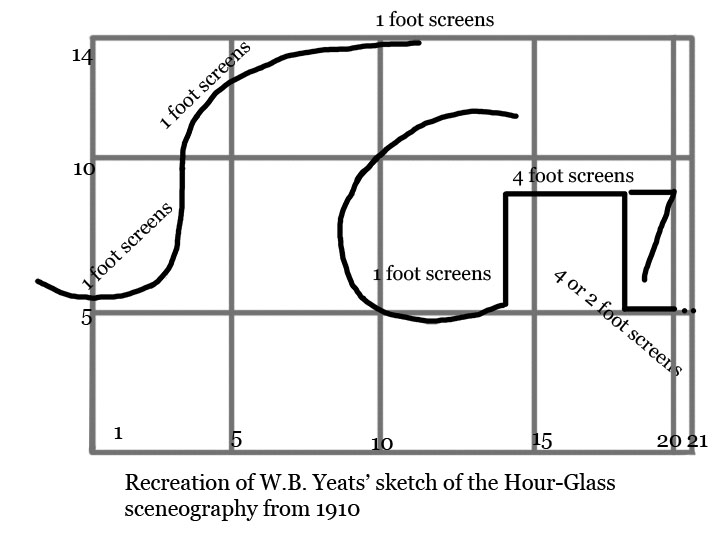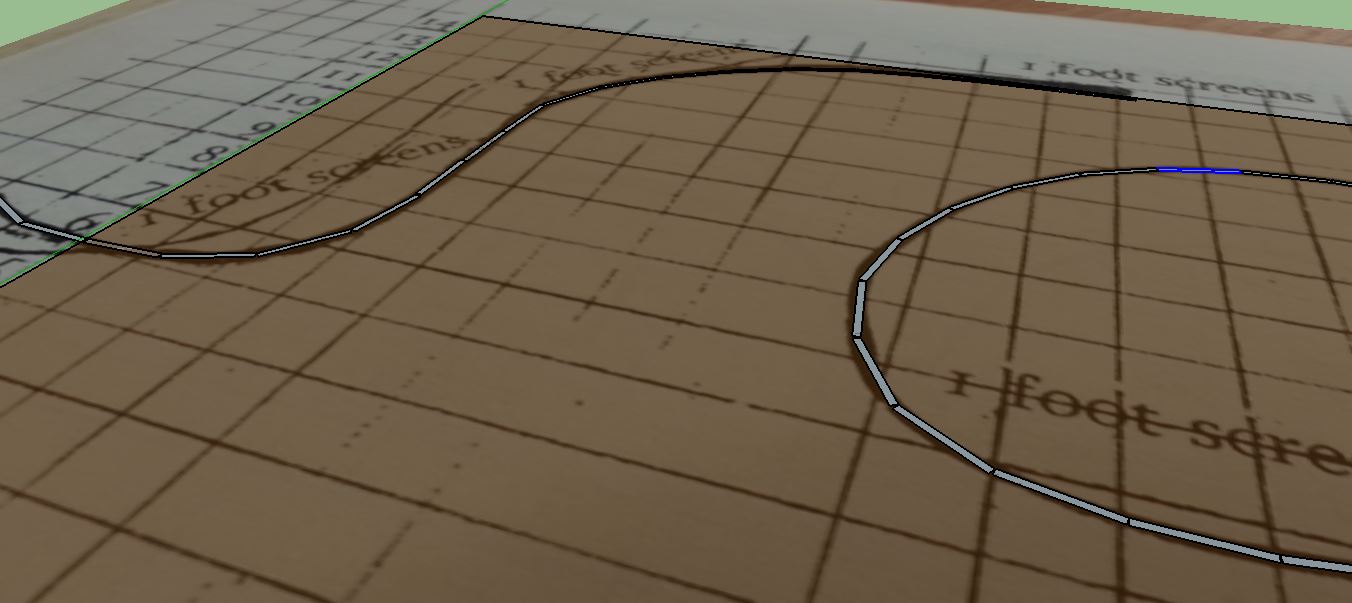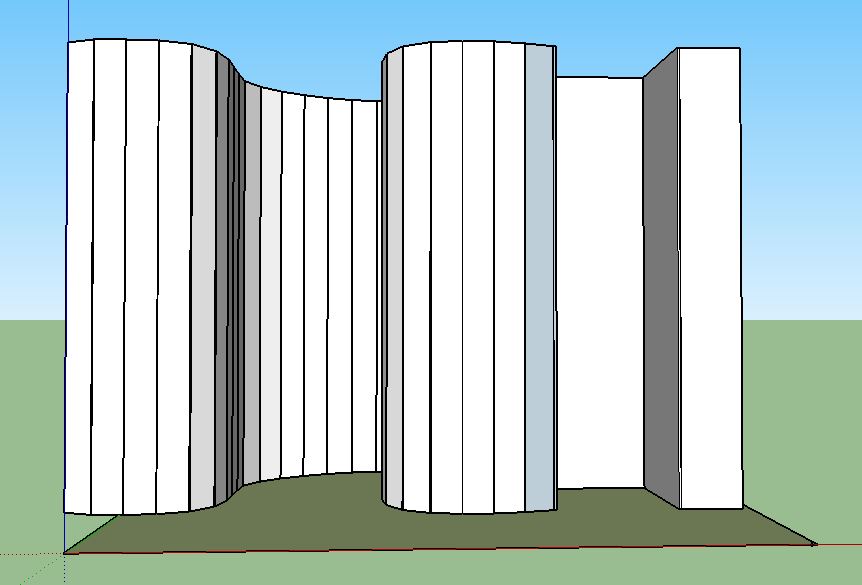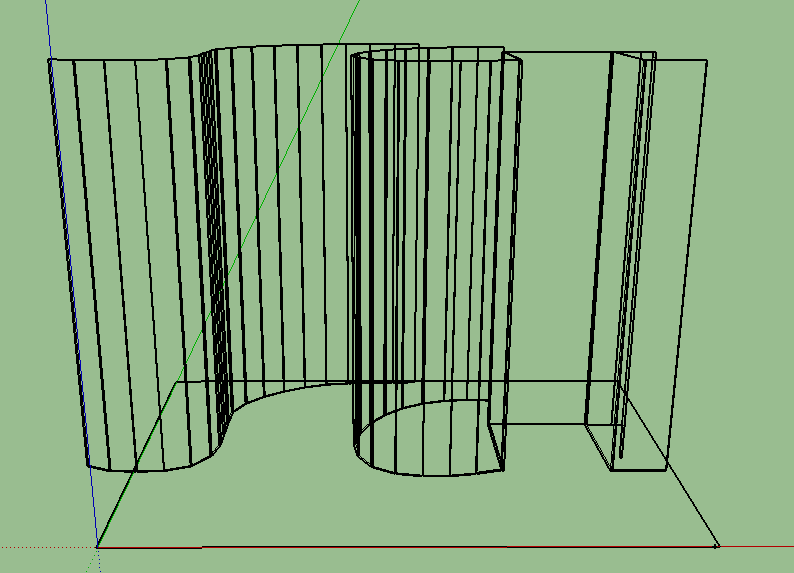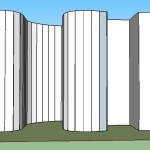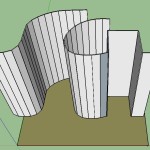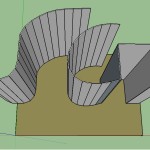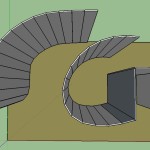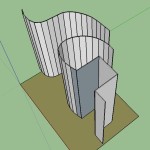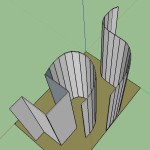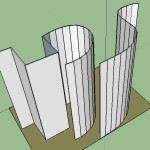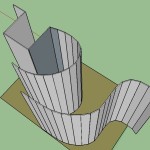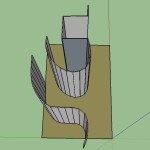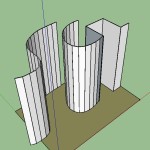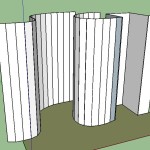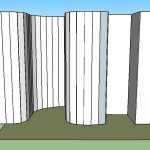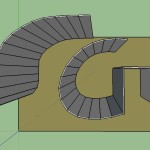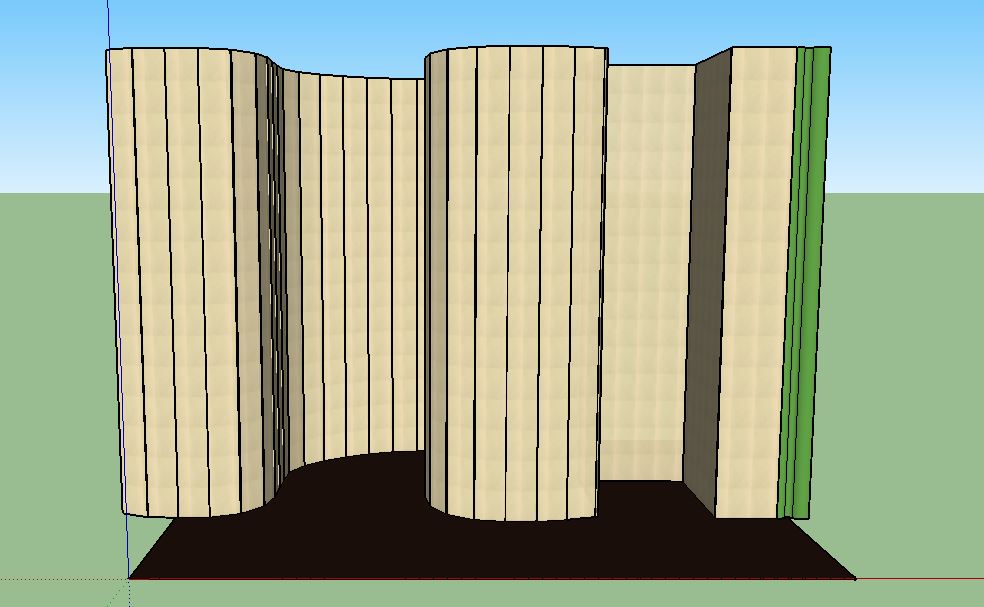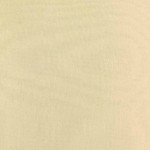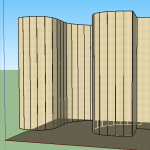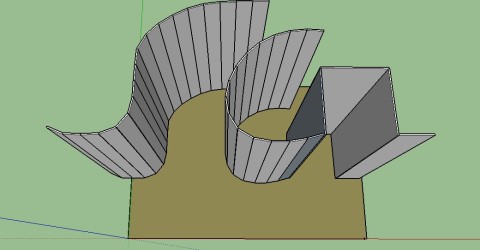
The next step in our visualization of the 1912 Hour-Glass stage production after creating our first model created for the Hour-Glass (found here) was to refine and add to the original model based on additional research and modeling considerations. This included converting Yeats’ sketched shapes into screens as well as adding additional elements and textures. These modeling methodologies and justifications are described below.
Converting the Sketched Shapes into Screens
Despite several weeks of intensive research, the sketch of Craig’s screens for the 1912 Hour-Glass production taken from Yeats’ scene notebook remained the best example out of a small collection of original documents on which to model the staging of the screens in the Abbey (see Dorn, p. 125). A transcribed version of Yeats sketch found in Liam Miller’s The Noble Drama of W. B. Yeats was helpful in increasing the accuracy of our model because it overlaid the sketch on a grid, bolded the path of the screens on the stage and deciphered Yeats annotations, which we previously could not read (Miller, 160). The annotations revealed Yeats intended the curved shapes on stage right to be made out of a series of one foot wide screens, and the rectilinear shapes on stage left to be made out of four foot wide screens or a combination of four foot and two foot wide screens. The sketch below is a recreation of Yeats’ original sketch.
It is important to remember that this visualization is meant to provide an interpretation of how the stage might have looked. It is not historical fact since the model is only based on a sketch made by Yeats before the play was actually staged. Until more primary evidence is uncovered, we may never know exactly what the 1912 production of the Hour Glass looked like. The only other main difference between the first practice model and the second model is that the long curved wall extending from stage right was pushed about one foot closer towards stage right to follow the exact path of the sketch.
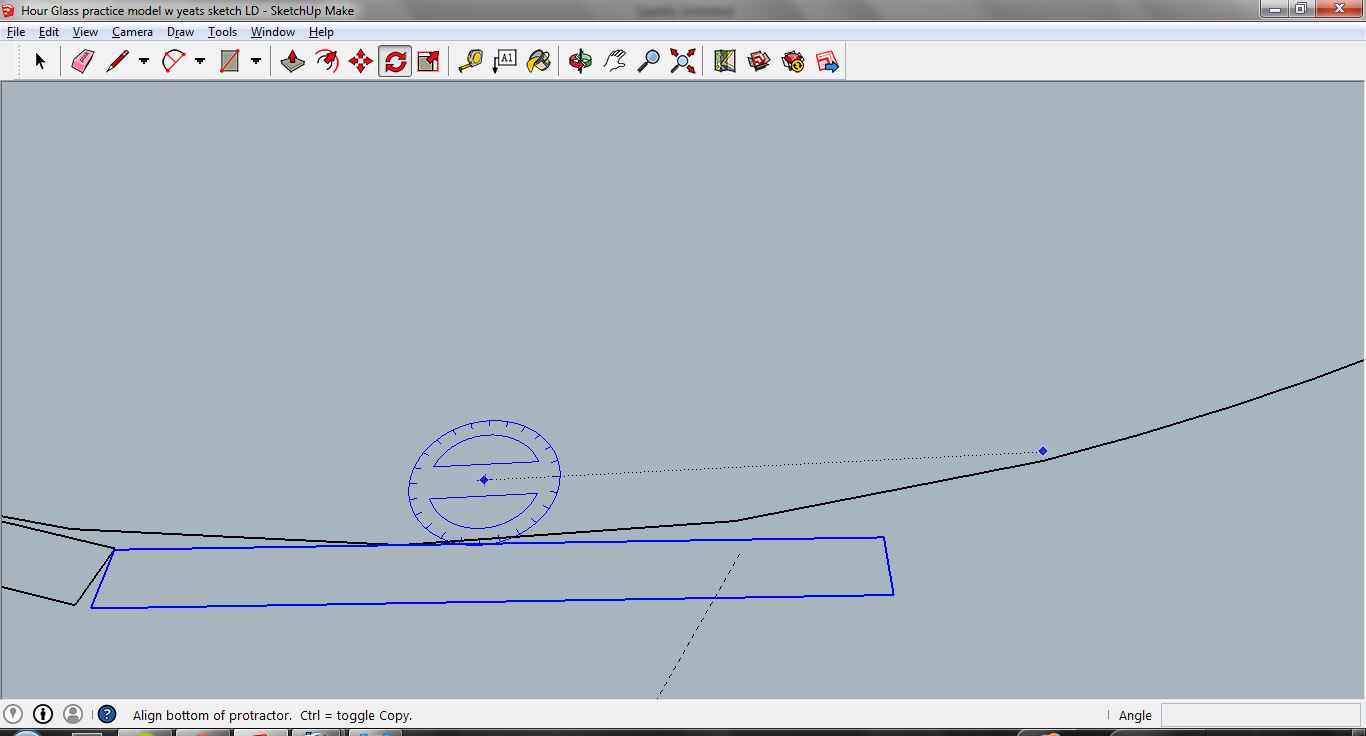
Closeup showing the use of the protractor tool with the rotate tool in SketchUp to carefully place each screen on the curved path laid out by Yeats’ sketch.
Then the 2D screens were each raised to a height of fifteen feet (a height we chose hoping it would reach past the vertical sight lines of the stage for the audience), which concluded the second phase of modeling. The next step is to bring this stage design into an existing model of the Abbey’s permanent stage architecture made by NOHO for the visualization project Abbey Theatre, 1904. This will conclude the architectural modeling phases of the project, so the lighting phase of the project can begin.
Additional Images
- Front view of the revised modeling of Craig’s screens for the 1913 production of the Hour-Glass at the Abbey theatre. This model is based on the transcribed version of Yeats’ sketch done by —–. Source ——
- Front view
- Front view
- Front view
- Front view
- Top view
- Stage left
- Stage left
- Back, stage left
- Back, stage left
- Back, stage left
- Back
- Back, stage right
- Back, stage right
- Stage right
- Stage right
- Stage right
Adding Additional Screens and a Curtain Yeats’ sketch includes an inverted L-shape on stage left as well as a dotted line that extends beyond the straight screen on stage left at foot 20-21. Yeats also included an annotation, but it cannot be deciphered. As this is a sketch of Craig’s screens, it is presumed the L-shape is an additional screen. At this stage its purpose is a little unclear because it appears to be hidden behind other screens, but we hope the visualization process itself will help us understand the purpose of this mysterious screen. It is also presumed the dotted line refers to some sort of curtain that would mask the edge of the stage. We decided to incorporate this hypothetical curtain into our model and paint it green based on two accounts. Yeats noted, “[…] I have simplified the scenery, having The Hour Glass, for instance, played now before green curtain […]” (see Seskine, p.138) and Richard Taylor made reference to a “symbolic and harmonious colour scheme of olive-green, purple and red-brown against the ivory screens designed by Edward Gordon Craig” (Taylor p.18). Detail Images of the Additional Screen and Curtain
- Hour-Glass with additional screens and curtain, front
- Hour-Glass model with additional screen and curtain, stage left
- Hour-Glass with additional screen and curtain, back stage left
- Hour-Glass with additional screen and curtain, top
Texturing the Screens
We know the screens were an ivory color based on Yeats’ mention of “[…]those admirable ivory-coloured screens invented by Gordon Craig[…]” (see Seskine, p.138) in a letter he wrote as well as Richard Taylor’s description of a, “symbolic and harmonious colour scheme of olive-green, purple and red-brown against the ivory screens designed by Edward Gordon Craig” (Taylor p.18).” However, we do not definitely know what material they were made of. Mentions of a wood frame covered in ivory silk were mentioned by Halloway, but no conclusive source was found (Flannery, 98). For our model we chose to use an image of ivory silk organza was used to texture the screens to show one possible interpretation of Craig’s vision for his screens. The opacity level was set to 95%, giving the screens the slightest amount of transparency, which would have been likely if the screens were covered in silk and then painted as sources suggest.
- The ivory silk image used to texture the screens
- Screen shot of the screen texture settings in SketchUp
Bibliography
- Dorn, Karen. ‘Dialogue Into Movement: W.B. Yeats’s Theatre Collaboration with Gordon Craig’. Yeats and the Theatre. Ed. O’Driscoll, Robert and Reynolds, Lorna. London [etc.]: Macmillan, 1975. 109–137. Print.
- Flannery, James W. ‘W.B Yeats, Gordon Craig and the Visual Arts of the Theatre’. Yeats and the Theatre. Ed. O’Driscoll, Robert and Reynolds, Lorna. London [etc.]: Macmillan, 1975. 82–108. Print.
- Miller, Liam and Dolmen Press. The Noble Drama of W.B. Yeats. Dublin: Dolmen Press, 1977. Print
- Seskine, Mararu and Christopher Murray. Yeats and the Noh: a Comparative Study. Savage: Barnes and Noble, 1990.
- Taylor, Richard. The Drama of W.B. Yeats: Irish Myth and the Japanese Nó. New Haven ; London: Yale U.P, 1977. Print.

